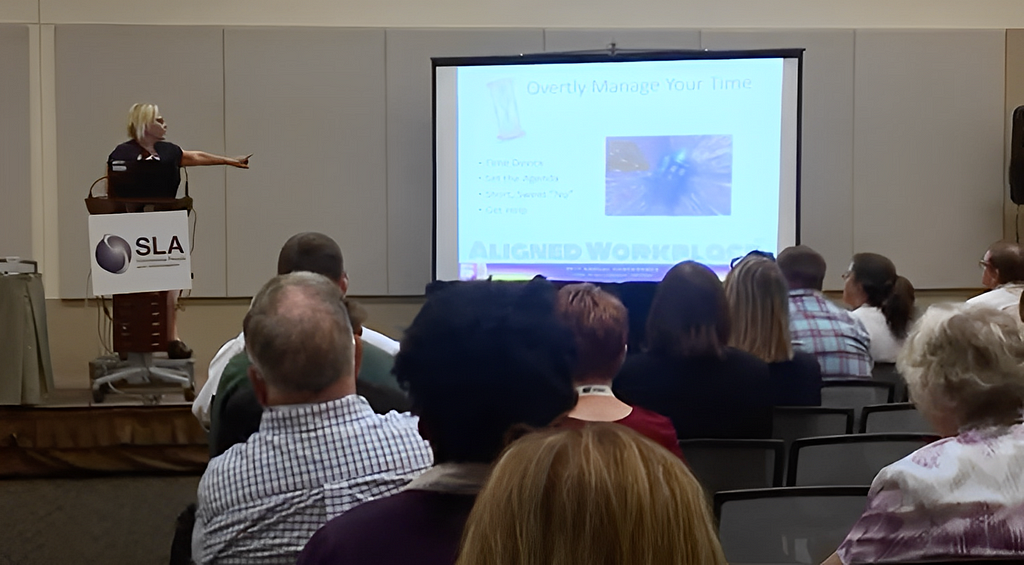Quiet Committing: Author Ilene Marcus On The Five Commitments High Impact Leaders Make & Keep To Themselves Daily
An interview with Karen Mangia
Everyone wants a piece of me, in a good way! To toss an idea around, get my input on an issue, and discover new resources. When possible, I include a third person in the conversation. Although not always convenient, it builds team, spreads the message, and cross-pollinates ideas.
Quiet quitting is the emerging phenomenon of employee disengagement, essentially quitting on the job. What strategies do high-impact leaders deploy to motivate themselves and those around them to move from quiet quitting to quiet committing? Because, at its core, there is no change without commitment. Commitment to change ideas. Change beliefs. Change perspectives. Change routines, rituals, and boundaries. Organizations change one commitment at a time. One leader at a time. As part of our series about “Quiet Committing: The Top Five Commitments High Impact Leaders Make & Keep To Themselves Daily”, we had the pleasure of interviewing Ilene Marcus.
Ilene Marcus holds the ladder for Executives moving up, moving down, or barely hanging on. With over 32 years spearheading high-stakes teams at multi-million-dollar organizations managing 10,000 employees, she is the Author of Managing Annoying People. As a Techstars Global Facilitator (leading seed accelerator), Ilene travels the country mentoring entrepreneurs to start and scale businesses.
Thank you for making time for our visit. What was the first job you had, and how did that job shape the leader you are today?
My first job was putting the curve in mascara brushes at a factory on an assembly line. It taught me that even if we are all doing a cookie-cutter job, we are unique and have ideas to offer, how those ideas are presented and harnessed is the hallmark of a good leader.
We’re talking about quiet quitting in this series. What’s the greatest lesson you’ve learned from a job you decided to quit?
Don’t hang on too long, once you shut off, get out. It is more honorable to be upfront and honest and this will put you in a better mental and emotional place, even with negative financial impact, to springboard to the next rung on your ladder.
Employee Engagement is top of mind for most organizations. How do you define an engaged employee?
Someone who understands the impact of their work, their behavior, and their decisions on those around them and acts from that place of thinking about what is good for them, their team, and the organization as a whole. They contribute and show up consistently and grow the work instead of shrinking from it.
Say more about your Employee Engagement portfolio. What’s working? What’s not working? And what are you piloting now to address the Quiet Committing trend?
Employee engagement is the biggest part of my mentoring and consulting business. I use the Supportive Leadership Model to move the needle on employee engagement:
- Be a cheerleader for Noble Purpose. Quantify and tie each employee’s contribution to the bottom line and the mission and show them you know they make a difference.
- Remove roadblocks that are slowing down top talent, including finding budget-neutral resources to keep them achieving using the Supportive Leadership Model.
- We are piloting and changing the way we interview and assess candidates. We are purposefully elongating the hiring process to observe if candidates show up consistently and inserting the carefully worded “trick question”, to ascertain honesty, logic, and team ability.
As goes the leadership, so goes the team. How do you hold leaders accountable for their own level of engagement?
I am a strong cup of coffee and I hold a mirror to their action. I include a fair amount of role-playing while working with others. Although it is something most are reluctant to do, it is extremely instructive about how they react in real time and sheds light on how their actions may be interpreted by others.
The first phase of the pandemic ushered in the phenomenon called The Great Resignation, where employees left organizations to pursue greater meaning and purpose. Then came The Great Reshuffle, where employees left organizations to pursue promotions, pay and perks. Now we’ve entered a third phase, Quiet Quitting, where employees are deeply disengaged. What do you believe to be the key drivers of Quiet Quitting?
I believe people are quiet quitting because they feel dissed by their employer. Over the past few years, they have been overlooked for promotions or have brought new ideas that were not implemented or were given to another employee or team to implement. They like the mission, the work the clients, so they hang on for a change and hope they will be noticed or heard, that their time will come to shine, and instead they get more and more detached.
Sure, there are those who hang on for fear of economic insecurity or are too lazy to move on, but the big driver is the solid employee who feels overlooked and underappreciated.
What do you predict will be the next phase in the evolution of the employer / employee landscape?
Efforts to transcend conventional attraction and retention efforts will be the next evolution. I believe the ability to use innovation as the key strategy to keep and grow best performers will define the employer/employee relationship moving forward. Fostering innovation builds a 3-pronged foundation to springboard engagement, drive attraction and retention, and accelerate business outcomes. First, innovation builds individual confidence through immediate opportunities to use new skills. Next, it encourages team cohesion through cross-functional roles. Finally, it makes the direct link employees crave to quantify their contribution to the mission, generating excitement, an especially important point in engaging Millennials and their younger counterparts.
What leadership behaviors need to evolve to improve employee engagement in a sustainable way?
Managers must lean into a different set of skills to propel and manage those who innovate. Even in organizations that value innovation, the path to success is not always clearly delineated. Managers must adopt a framework, such as The Supportive Leadership Model™ that shows team leaders how to apply tools that sustain innovation as a core competency to build a culture of engagement and growth to fuel talent attraction, retention, and ultimately business success.
Managers will also need basic interpersonal and nurturing skills. Most are overtrained in self-development, handling difficult situations, and ascending to leadership ranks. They lack basic knowledge on how to take tangible small actionable steps to keep staff on their journey to foster overall corporate growth. They get bogged down thinking it takes time away from their “real work” until they are trained to understand and realize the real work is managing their team to get there.

Change requires commitment and happens one choice at a time. What are the top five commitments you make and keep to yourself daily that have a material impact on those you lead?
- Slow Down and Bring Others Along.
I didn’t get where I am by being slow. Often, I forget that I am wired for a different speed and that my brain works like a 3-D chess board attuned quickly to strategy on several levels. It’s imperative that I slow down and make sure others are on the same page, see all the angles I see, and that I bring others along instead of getting there first.
2. Teach Something New Today.
We all know the advice, to learn something new each day. Sure, do that. More importantly, be the one to teach something new to another. Commit to making it make it happen for someone else. Keep it small, a brief backstory, or a bit of trivia. Show others how you think in a way they will remember. I have found it is usually these small conversations, factoids, and exchanges that my clients and team remember and bring them up again when I least expect it, and it moves the work forward.
3. Have Threesomes Whenever Possible.
Everyone wants a piece of me, in a good way! To toss an idea around, get my input on an issue, and discover new resources. When possible, I include a third person in the conversation. Although not always convenient, it builds team, spreads the message, and cross-pollinates ideas.
4. Keep Perspective.
What is deeply rooted in me is that I am intense. What is really annoying about me is that I am intense. Sometimes I lose sight of what makes me successful can also take me down a rabbit hole. I make the commitment to keep perspective, I call it Goldilocksing, find the right size, not too big, not too small, just right and remember, Goldilocks was trespassing in the 3 bears house, so I must ask, should I even be in this territory? Now that’s a perspective.
5. Start one new project — even if it’s just the warm-up….
I always have ideas, and so do my team and my clients. Every day I try to get one new conversation on the books. Put an idea out there, get a next step, move the proverbial ball down the field or the court or in the right direction. This ensures that even when I am stagnant there are things in the works that will eventually bubble. The best part, others reciprocate and bring new ideas to me, and we keep growing and going deeper and building our next steps.
What’s the most effective strategy you’ve discovered to get back on track when you break a commitment you’ve made?
Take several deep breaths and put the situation in perspective. I literally turn clockwise three times to start fresh. Keeping these commitments to myself propels me to do better and that’s the true commitment, know better and do better each day.
Thank you for sharing these important insights. How can our readers further follow your work?
Follow-me on linked in, YouTube and hire me to be your speaker.
Thank you for giving us the opportunity to experience a leadership master at work. We wish you continued success and good health!
About The Interviewer: Karen Mangia is one of the most sought-after keynote speakers in the world, sharing her thought leadership with over 10,000 organizations during the course of her career. As Vice President of Customer and Market Insights at Salesforce, she helps individuals and organizations define, design and deliver the future. Discover her proven strategies to access your own success in her fourth book Success from Anywhere and by connecting with her on LinkedIn and Twitter.
Quiet Committing: Author Ilene Marcus On The Five Commitments High Impact Leaders Make & Keep To… was originally published in Authority Magazine on Medium, where people are continuing the conversation by highlighting and responding to this story.


